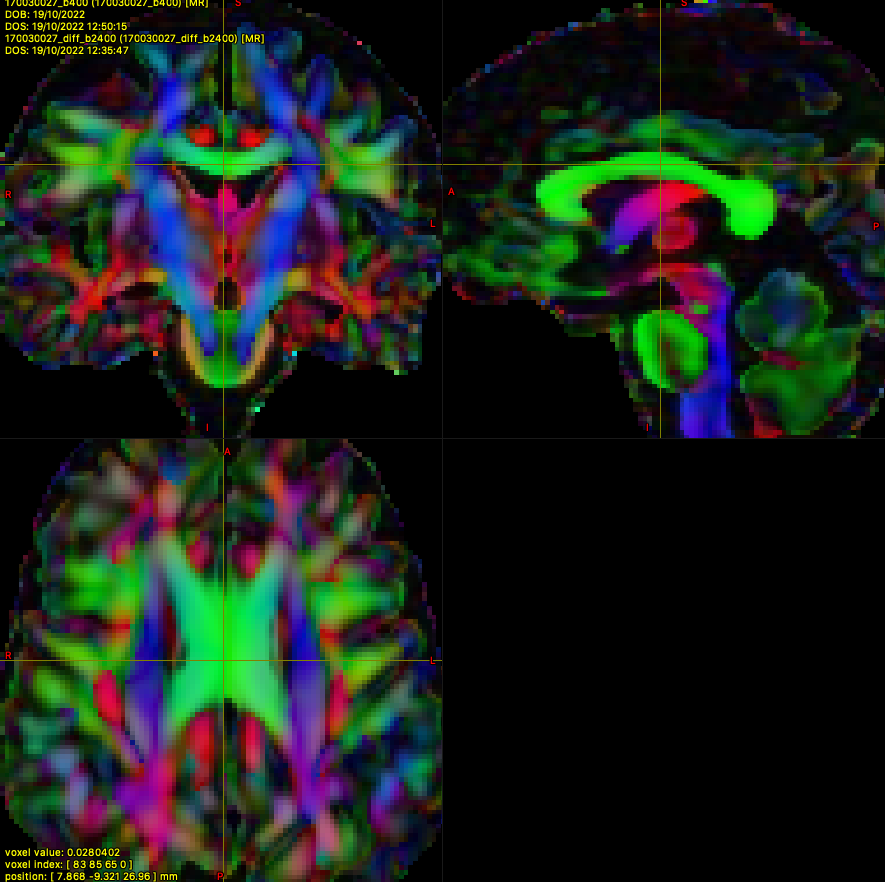Hi @rsmith or @jdtournier
Simple question: How do I read the dwigradcheck table? Is this suggesting a x-axis flip?
Mean length Axis flipped Axis permutations Axis basis
60.26 0 (0, 1, 2) image
59.74 0 (0, 1, 2) scanner
37.79 2 (0, 1, 2) image
37.24 none (0, 2, 1) scanner
37.21 0 (0, 2, 1) image
37.07 2 (0, 1, 2) scanner
36.54 none (0, 2, 1) image
36.39 0 (0, 2, 1) scanner
35.52 2 (2, 1, 0) scanner
35.38 1 (1, 0, 2) scanner
34.92 0 (2, 1, 0) image
34.91 2 (2, 1, 0) image
34.89 0 (2, 1, 0) scanner
34.88 1 (0, 1, 2) image
34.83 none (0, 1, 2) image
34.79 none (0, 1, 2) scanner
34.75 0 (1, 0, 2) image
34.54 1 (0, 1, 2) scanner
34.51 1 (1, 0, 2) image
34.36 0 (1, 0, 2) scanner
29.04 2 (0, 2, 1) scanner
29.02 1 (0, 2, 1) image
28.18 2 (2, 0, 1) scanner
27.78 none (2, 0, 1) image
27.53 1 (1, 2, 0) scanner
27.36 1 (2, 0, 1) image
27.27 1 (0, 2, 1) scanner
27.16 none (1, 0, 2) image
27.14 2 (1, 0, 2) scanner
27.11 0 (2, 0, 1) scanner
27.10 2 (1, 2, 0) image
27.03 none (1, 2, 0) image
27.00 2 (0, 2, 1) image
26.80 0 (1, 2, 0) scanner
26.80 2 (1, 2, 0) scanner
26.39 0 (1, 2, 0) image
26.39 none (1, 0, 2) scanner
26.36 1 (2, 0, 1) scanner
26.34 none (2, 0, 1) scanner
26.28 none (2, 1, 0) scanner
26.25 none (1, 2, 0) scanner
26.25 1 (1, 2, 0) image
26.22 2 (2, 0, 1) image
26.18 0 (2, 0, 1) image
25.99 none (2, 1, 0) image
25.99 2 (1, 0, 2) image
25.79 1 (2, 1, 0) image
25.60 1 (2, 1, 0) scanner
